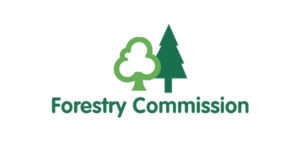
The Wildlife Division (WD) of the Forestry Commission, under the Ghanaian Ministry of Lands, Forestry and Mines, is our key partner in the Kakum National Park.The Forestry Commission of Ghana, which was established by Act 571 of 1999, is responsible for the regulation of the utilization of forest and wildlife resources, the conservation and management of those resources and the coordination of policies related to them.
The following agencies currently form the divisions of the Forestry Commission:
- Forest Services Division
- Wildlife Division
- Timber Industry Development Division
- Wood Industries Training Centre
- Resource Management Support Centre
The WD is responsible for the management of 18 Protected Areas including 7 National Parks (one of which remains to be formally gazetted), 6 Resource Reserves, 4 Wildlife Sanctuaries (two of which are managed in collaboration with other stakeholders), 1 Strict Nature Reserve and 5 coastal Ramsar sites. The WD is also responsible for issuing hunting licenses (which are obligatory) and enforcing relevant regulations. Bushmeat traders are also required to operate under licenses, which are issued by the District Assemblies.
The WD activities fall within 7 larger programmes/strategies:
- Protected Areas management
This programme aims to ensure effective management of a system of Protected Areas that is fully representative of Ghana’s various ecological communities and biodiversity.
- Institutional Reform and Human Resources Development
This programme aims at developing an efficient service-orientated Wildlife Division, which works in partnership with other agencies (governmental and non-governmental) and private sector operators to maximise the contribution of wildlife to national socio-economic development.
- Promotion of community-based conservation
This programme aims to ensure participation of rural communities in wildlife management activities in both on and off Protected Areas. The cornerstone of WD’s efforts to engage communities in off-reserve areas is the development of the concept of Community Resource Management Areas (CREMAs), based on the principle of devolving responsibility for wildlife off-reserve to registered CREMAs. The concept is being developed on a pilot basis in the communal lands of Amokwasuaso bordering the Ankasa Conservation Area. The Collaborative Resource Management Unit is in charge of this task.
- Public Awareness and Education
This programme aims to gain universal support for wildlife conservation by developing an understanding of the issues involved, and appreciation for wildlife.
- Economic development of wildlife resources
- Research and Monitoring
This programme aims to provide the information that wildlife managers need to make the right management decisions. Priority research topics have been identified.
- Optimisation of revenues
The joint project between the WD and Microsfere falls under the 3
rd WD strategy, namely the promotion of community-based conservation.
 The Wildlife Division (WD) of the Forestry Commission, under the Ghanaian Ministry of Lands, Forestry and Mines, is our key partner in the Kakum National Park.The Forestry Commission of Ghana, which was established by Act 571 of 1999, is responsible for the regulation of the utilization of forest and wildlife resources, the conservation and management of those resources and the coordination of policies related to them.
The following agencies currently form the divisions of the Forestry Commission:
The Wildlife Division (WD) of the Forestry Commission, under the Ghanaian Ministry of Lands, Forestry and Mines, is our key partner in the Kakum National Park.The Forestry Commission of Ghana, which was established by Act 571 of 1999, is responsible for the regulation of the utilization of forest and wildlife resources, the conservation and management of those resources and the coordination of policies related to them.
The following agencies currently form the divisions of the Forestry Commission:

